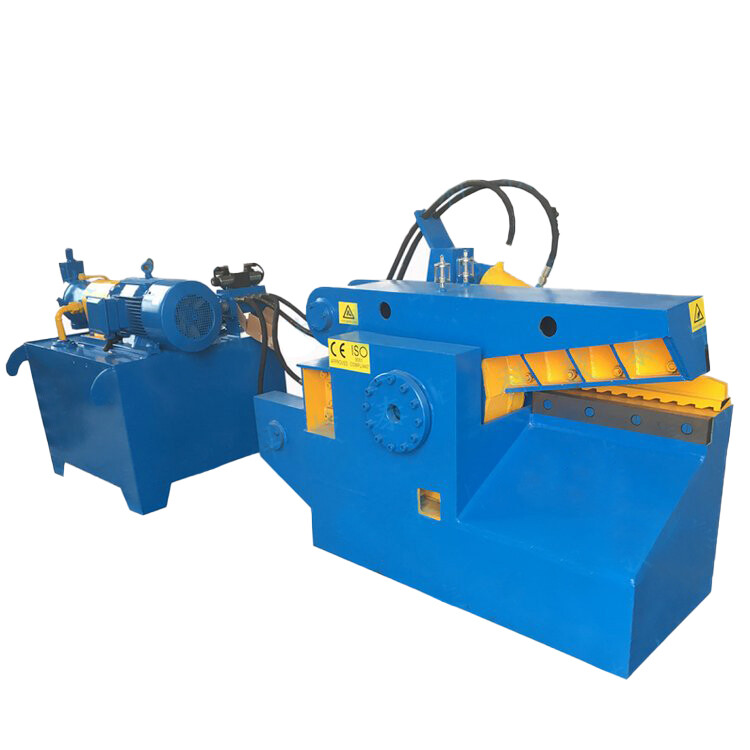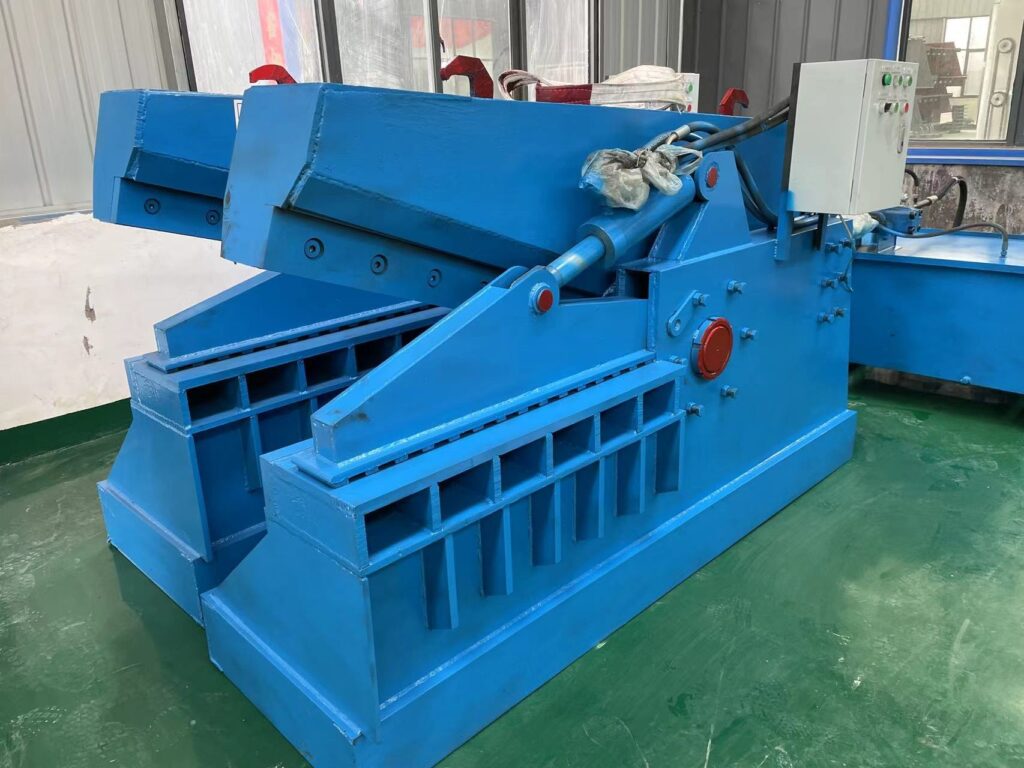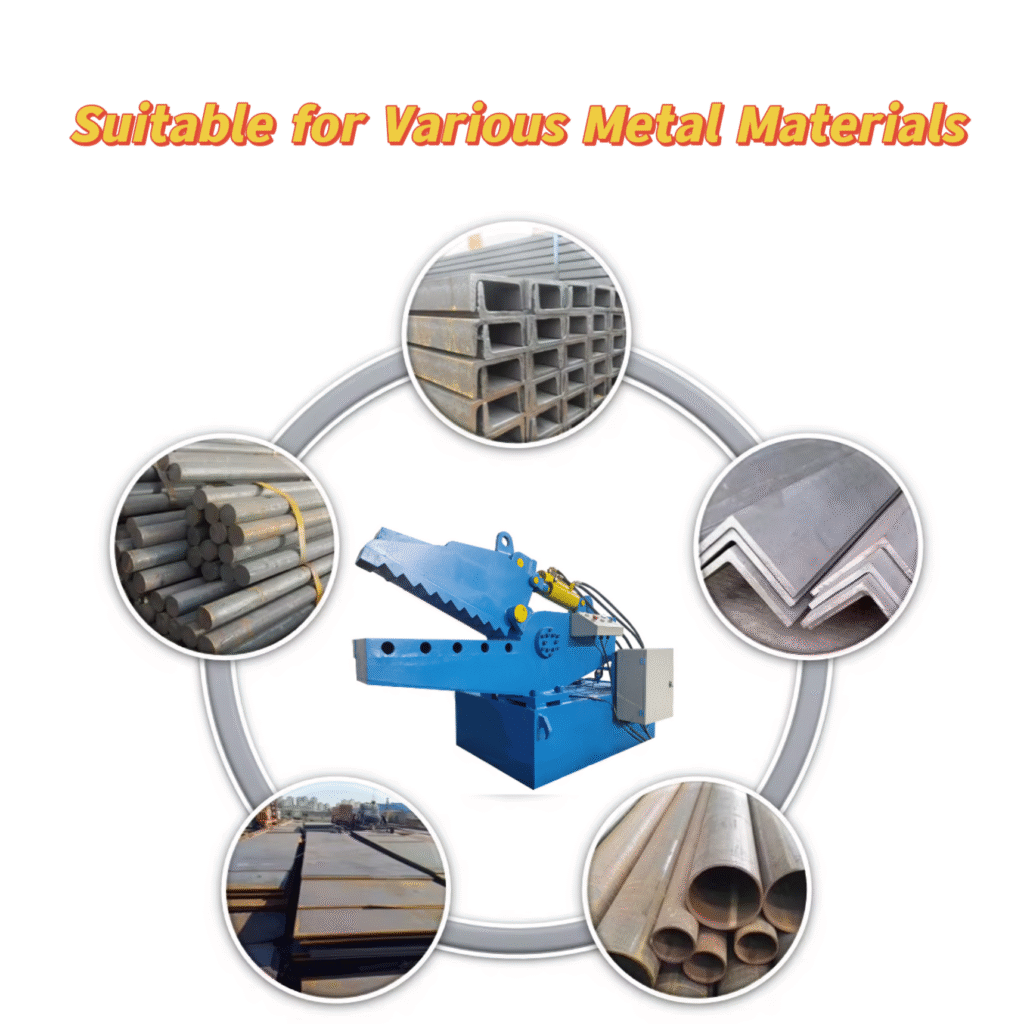In the fast-growing scrap metal recycling industry, processing efficiency determines profitability. Large, irregular, and bulky scrap metals must be cut down to manageable sizes before they can be transported, melted, or further processed. Among the many tools available, the Alligator Shear stands out as one of the most efficient and cost-effective machines.
Named for its resemblance to the snapping jaws of an alligator, this hydraulic-powered shear has become a trusted workhorse in recycling yards, demolition sites, and metal processing factories worldwide. In this blog, we will explain the working principle of the alligator shear, its main components, and why it has become an essential tool for scrap cutting operations.
What Is an Alligator Shear?
An Alligator Shear is a hydraulically driven cutting machine used primarily to cut scrap metal into smaller, uniform pieces. Its design is simple yet powerful: a fixed lower blade and a movable upper blade hinged like an alligator’s jaw. When activated, the hydraulic system drives the upper blade downward to shear through metal with immense force.

Typical Materials It Can Cut:
-
Steel bars and rods
-
Angle iron and I-beams
-
Pipes and tubes
-
Rebar and wire bundles
-
Mixed demolition scrap
Its versatility makes it suitable for a wide range of industries, from scrap recycling to steel mills and foundries.
Working Principle of an Alligator Shear
The alligator shear operates on a hydraulic power system, which generates the required force to move the upper blade against the fixed lower blade.

Step-by-Step Process:
-
Loading the Scrap
-
The operator places scrap metal between the fixed and movable blades.
-
Larger models may be equipped with feeding tables or conveyors to handle continuous input.
-
-
Hydraulic Power Activation
-
Once engaged, the hydraulic pump builds pressure and channels fluid into the hydraulic cylinder.
-
This pressurized fluid forces the piston rod to move, driving the movable upper jaw.
-
-
Shearing Action
-
The upper jaw descends at an angle, applying concentrated force on the scrap.
-
As the upper blade overlaps the lower blade, the scrap is sheared cleanly into smaller pieces.
-
-
Release & Reset
-
After the cut, the hydraulic system reverses, pulling the upper jaw back to its starting position.
-
The operator reloads new material for the next cycle.
-
This process is fast, repetitive, and energy-efficient, making it ideal for continuous scrap cutting operations.
Key Components of an Alligator Shear
-
Hydraulic Cylinder: Generates the cutting force.
-
Upper & Lower Blades: Hardened tool steel blades that withstand heavy-duty cutting.
-
Frame & Pivot System: Provides structural strength and supports the jaw movement.
-
Hydraulic Pump & Motor: Power source that drives the system.
-
Control System: May include manual levers, foot pedals, or PLC automation.
Advantages of Using Alligator Shears

-
High Cutting Efficiency
-
Processes tons of scrap per hour, far faster than manual cutting torches or saws.
-
-
Versatility
-
Handles irregular, long, or bulky scrap that other cutting machines cannot easily process.
-
-
Compact Design
-
Requires less floor space than guillotine shears, making it ideal for small to mid-sized factories.
-
-
Energy Savings
-
Hydraulic systems consume less energy compared to older mechanical shears.
-
-
Improved Safety
-
Equipped with guards, emergency stops, and overload protection to protect operators.
-
-
Durability
-
Designed for heavy-duty operation, with replaceable blades for long service life.
-
Applications in Scrap Recycling
-
Scrap Yards: Cutting long steel beams into shorter lengths for transport.
-
Demolition Sites: Processing structural steel directly on-site.
-
Steel Mills & Foundries: Preparing scrap feedstock for smelting.
-
Automotive Recycling: Cutting car frames, axles, and other components.
By reducing bulky scrap into smaller, dense pieces, alligator shears optimize storage, transport, and furnace charging efficiency.
Conclusion
The Alligator Shear is more than just a cutting machine — it is an efficient, versatile, and indispensable tool in modern scrap recycling. Its hydraulic working principle delivers powerful, consistent, and safe cutting performance, making it far superior to manual or outdated mechanical methods.
For any recycling yard or metal processing facility looking to boost efficiency, reduce labor costs, and comply with safety standards, investing in a hydraulic alligator shear is a practical and profitable choice.
In the world of scrap recycling, the alligator shear truly lives up to its reputation as the “efficient jaws” of the industry.
